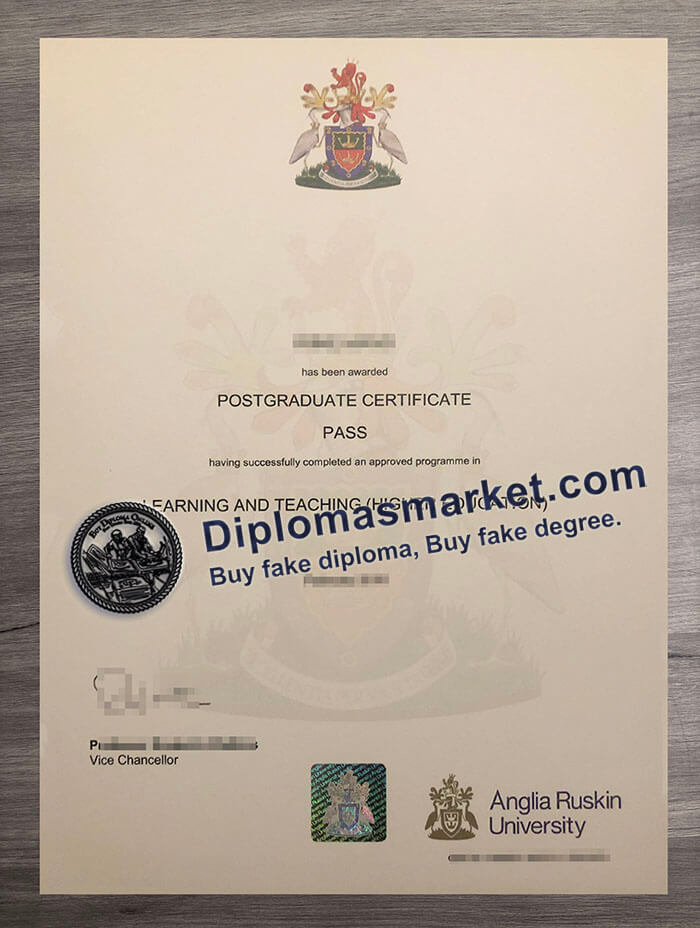
Anglia Ruskin University diploma
Anglia Ruskin University (ARU) is a university in East Anglia, United Kingdom. Its origins are in the Cambridge School of Art, founded by William John Beamont in 1858. How to Apply for a Anglia Ruskin University diploma? Create Anglia Ruskin University degree online, Buy fake ARU certificate. It became a university in 1992 and was renamed after John Ruskin in 2005. It is one of the “post-1992 universities”.
Anglia Ruskin has 39,400 students worldwide with campuses in Cambridge, Chelmsford, Peterborough and London. It shares further campuses with the College of West Anglia in King’s Lynn, Wisbech and Cambridge and has partnerships with universities around the world including Berlin, Budapest, Trinidad, Singapore and Kuala Lumpur. There are four faculties of study at the university: Faculty of Business and Law, Faculty of Arts, Humanities & Social Sciences, Faculty of Health, Education, Medicine & Social Care and Faculty of Science & Engineering.
The main teaching methods are classroom lectures, tutorials and practical classes. Is it possible to order a Anglia Ruskin University degree certificate? Forgery ARU transcript. Discussions and group tutorials are free-flowing and students have the opportunity to discuss certain issues in detail with teachers or other students.
Classroom demonstrations and interactive workshops are also very effective learning methods. If you are studying science or engineering courses, laboratory classes and practical classes may account for a large part of the course. Many courses are arranged with field internships, field trips and study abroad.

 USA Diplomas
USA Diplomas Canada Diplomas
Canada Diplomas UK Diplomas
UK Diplomas Australia Diplomas
Australia Diplomas Germany Diplomas
Germany Diplomas Malaysia Diplomas
Malaysia Diplomas Singapore Diplomas
Singapore Diplomas Other countries
Other countries Transcript-Form.xlsx
Transcript-Form.xlsx
